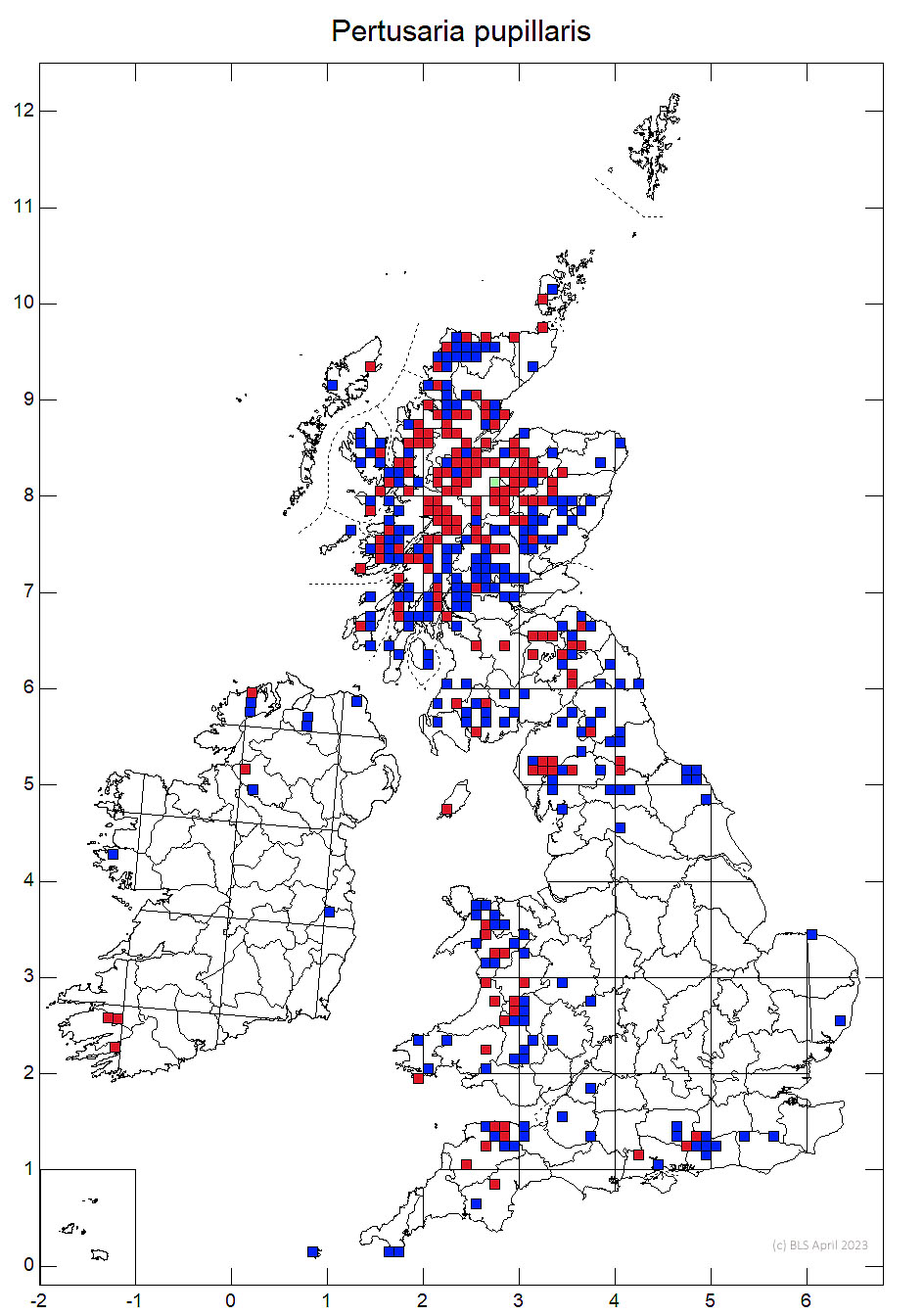Pertusaria pupillaris
A crustose sorediate epiphytic lichen with neat punctiforme soralia which give a Pd+ rust-red spot test. Found on acid bark in woodlands, where in can be confused with the similar looking Schizotrema quercicola, which is also Pd+ rust-red, but has Trentepohlia as a photobiont giving the soralia a pinkish tinge.
Thallus white- to green-grey, matt, usually in small patches to a few cm across, immersed to ± superficial and very thin; prothallus not distinct; soralia to 0.5 mm diam., punctiform, flat to excavate-ulcerose, pale greyish white or yellowish white, often evenly scattered, with fine granular soredia. Fertile warts 0.5–1 mm diam., rather rare, prominent, scattered; apothecia 1 per wart; disc red-black; thalline margin at first surrounding the disc, thick, wavy and later becoming ± excluded; epithecium olive-green, K+ violet. Asci 8-spored. Ascospores 10–14 × 7–11 µm, broadly ellipsoidal, the wall ca 1 µm thick, smooth. Thallus C–, K+ dirty reddish, KC+ yellow-red, Pd+ orange-red to rust-red, UV+ glaucous-white (fumarprotocetraric acid).
Characterised by the small neat punctiform Pd+ orange-red soralia and the Lecanora-like apothecia. Formerly misidentified in Britain & Ireland as Ramboldia cinnabarina, which has K+ yellow soralia due to the additional presence of atranorin. Has also been confused with Lepra borealis, which has a thicker thallus and larger soralia, and with Schizotrema quercicola, which has Trentepohlia as a photobiont and pinkish grey (when fresh) soralia. Sterile specimens can resemble Violella fucata but in that species the soralia are ± diffuse (sometimes well-defined) and more often form a ± continuous thick patchy granular-sorediate crust.
On damp acid smooth-barked trees, especially Hazel and Rowan, also Ash, Oak and on Scots Pine lignum in sheltered, often ancient woodland, but also in recent woodland sometimes.

Frequent N.W. Britain, extending locally elsewhere, rare in Ireland.
Cannon, P., Chambers, S., Coppins, B., Sanderson, N. & Simkin, J. (2021). Pertusariales: Pertusariaceae, including the genus Pertusaria. Revisions of British and Irish Lichens 6: 1-12.
Text by Neil A Sanderson based on Cannon et al (2021)

